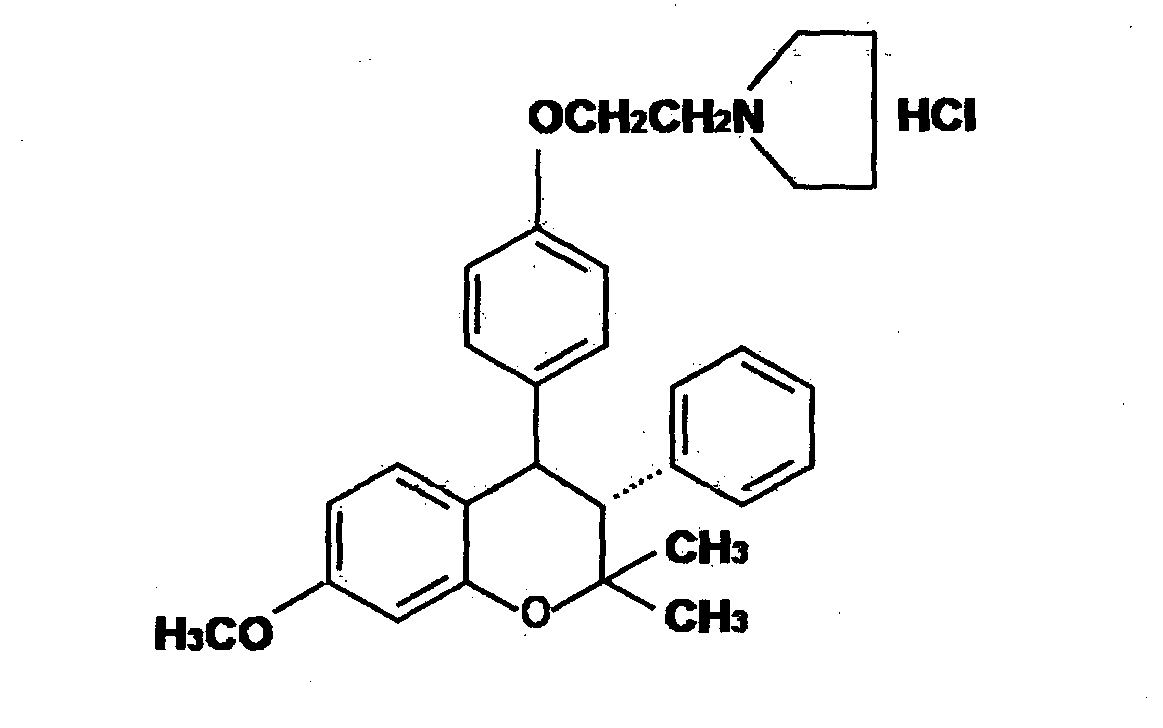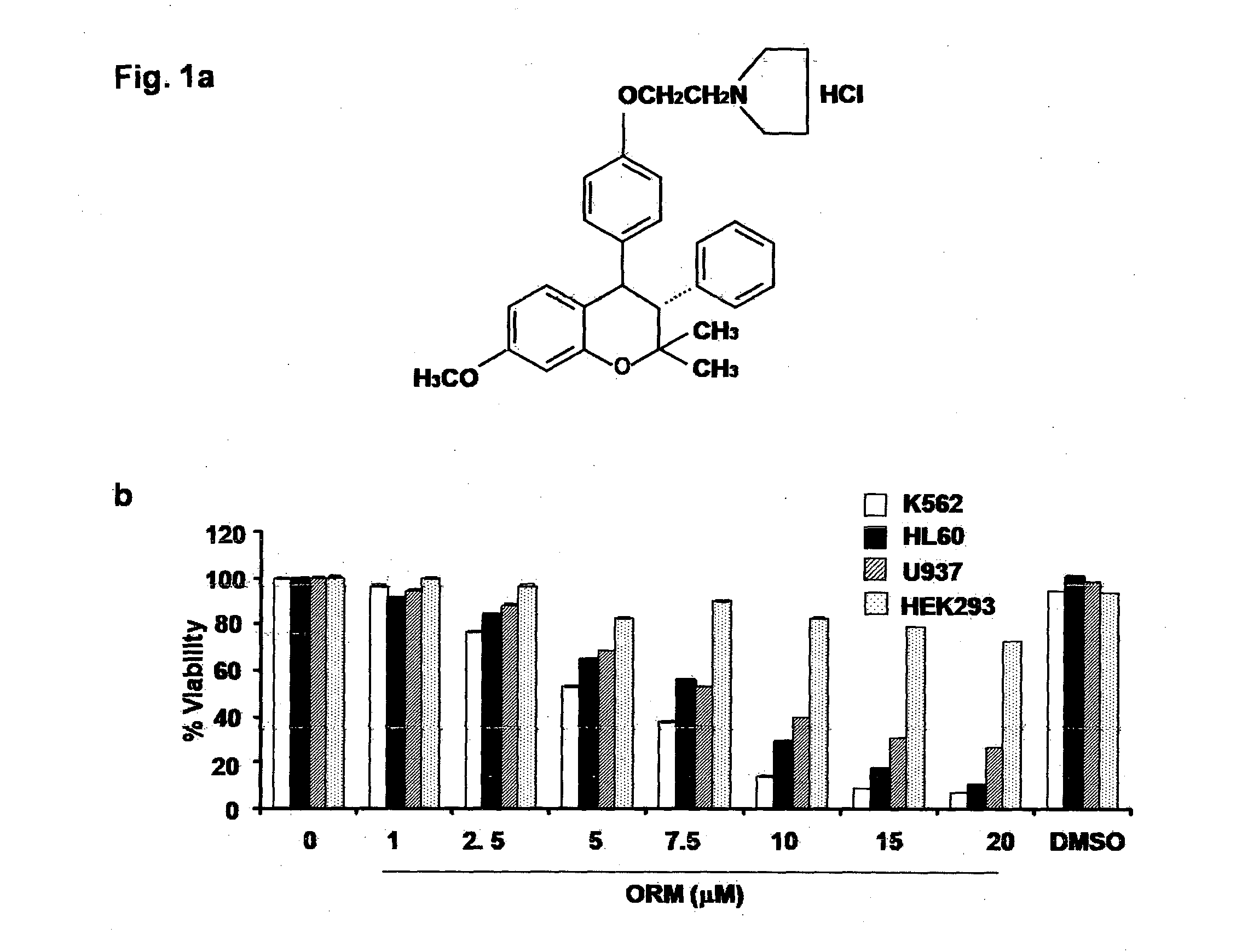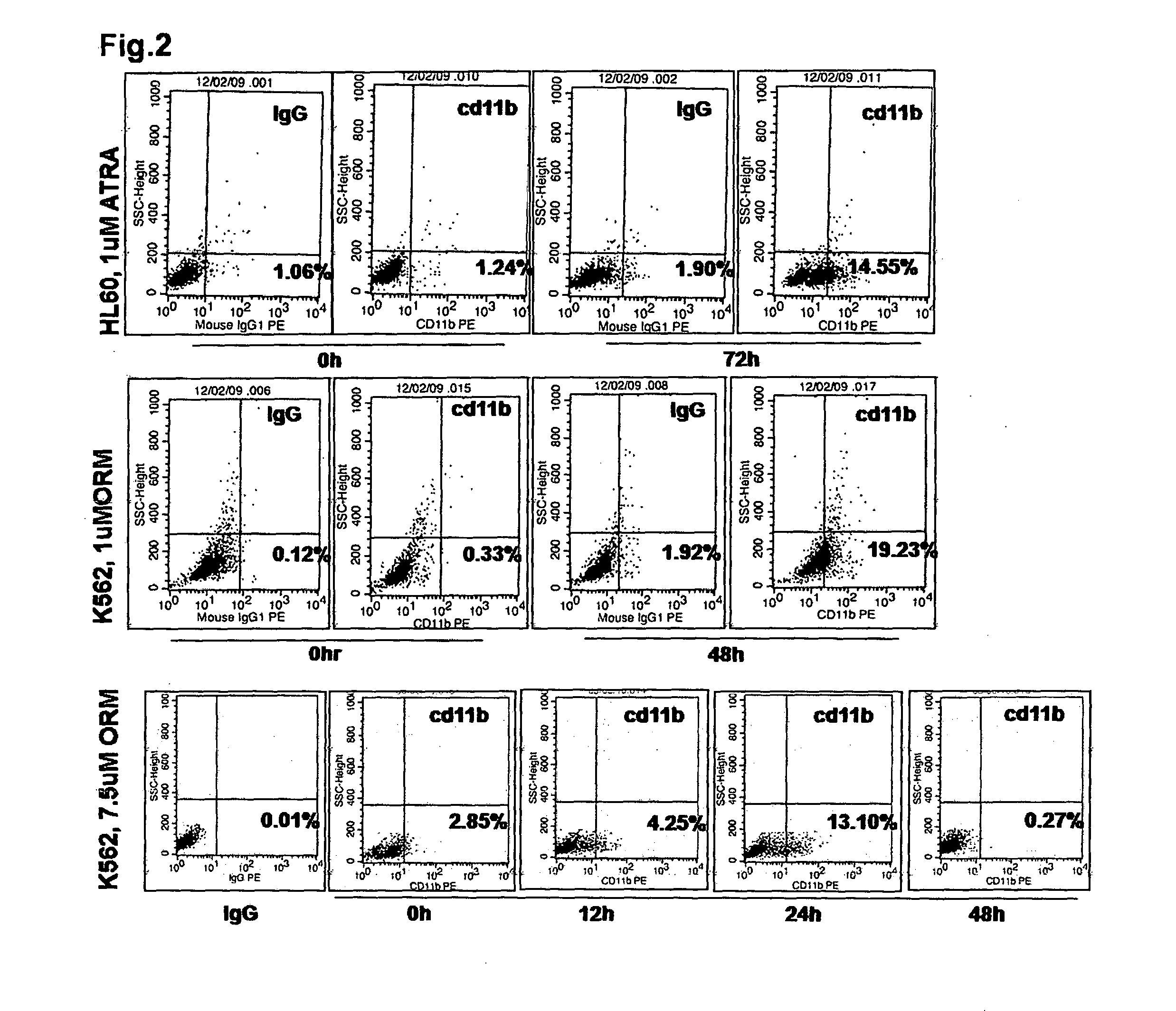An Anti-leukemic agent useful for inducing differentiation in myeloid leukemia cells
an anti-leukemia and anti-leukemia technology, applied in the field of anti-leukemia agents useful for can solve the problems of poor overall prognosis of myeloid leukemia patients, and achieve the effect of inducing differentiation in myeloid leukemia cells
- Summary
- Abstract
- Description
- Claims
- Application Information
AI Technical Summary
Benefits of technology
Problems solved by technology
Method used
Image
Examples
example-1
ORM Induces Growth Inhibition in Myeloid Leukemia Cells
[0031]To calculate 50% growth inhibitory concentration (IC50) of ormeloxifene, various myeloid leukemia cells (U937, HL60, K562) and HEK293T as control were assayed with different doses of ormeloxifene for cell viability in MTT Assay. ORM showed IC50 of ˜7.0 uM in leukemic cells as compared to 25 uM for 293T (FIG. 1b). Various apoptosis assays were performed in myeloid leukemia cells upon treatment with ormeloxifene that induces G0-G1 phase growth arrest and caspase mediated apoptosis in myeloid leukemia via ERK activation.
example-2
ORM Induces Differentiation in Myeloid Leukemia Cells
[0032]K562 cells were treated with 1 μM (Subapoptotic dose) and 7.5 μM ORM (Apoptotic dose) for 24 h and 48 hrs. Post 24 h and 48 h treatment, cells were analyzed in FACS-flow cytometer for the presence of myeloid differentiation marker cd11b (FIG. 2). In parallel, HL60 cells were also treated with 1uM All-Trans-Retinoic Acid (ATRA) for 72 hrs which served as control for induction of differentiation. Notably, increased percentage of cells expressing CD11b markers were observed after 24 and 48 h in cells treated with 1.0 uM ORM. Reduced number of cd11b expressing cells upon induction of 7.5 uM ORM may be due to prominent apoptosis imparted by ORM at this dose. Isotype IgG-PE antibody served as negative control.
[0033]To further corroborate the differentiation inducing potential of ORM, K562 cells were again treated with 1.0 uM ORM and vehicle for 12 days followed by cytospin and staining with Giemsa for assessment of morphological c...
example-3
Confirmation of Differentiation With Biochemical Assay
[0034]In order to further confirm the ORM induced differentiation in myeloid leukemia cells, Nitro Blue Tetrazolium (NBT) reduction assay is carried out which is a biochemical assay wherein activated granulocytes can reduce NBT to insoluble purple blue colour precipitates. Further, because ORM induces apoptosis at 7.5 uM in K562 cells; we treated K562 cells with 7.5uM for 24 h and 48 hrs and 1 uM doses for longer duration, 6 days. Cells were subjected for NBT reduction analysis. As shown in the FIG. 3b, dramatic increase in NBT reduction marked by purple blue coloration in the ORM treated cells was observed. This further confirmed differentiation inducing potential of ORM.
[0035]Furthermore, ORM induces granulocytic differentiation in K562 cells, it should lead to terminal differentiation of these cells to activated neutrophils. To substantiate further the induction of granulocytic differentiation and neutrophil formation, we meas...
PUM
| Property | Measurement | Unit |
|---|---|---|
| concentration | aaaaa | aaaaa |
| chemical structure | aaaaa | aaaaa |
| Chemical structure | aaaaa | aaaaa |
Abstract
Description
Claims
Application Information
 Login to View More
Login to View More - R&D
- Intellectual Property
- Life Sciences
- Materials
- Tech Scout
- Unparalleled Data Quality
- Higher Quality Content
- 60% Fewer Hallucinations
Browse by: Latest US Patents, China's latest patents, Technical Efficacy Thesaurus, Application Domain, Technology Topic, Popular Technical Reports.
© 2025 PatSnap. All rights reserved.Legal|Privacy policy|Modern Slavery Act Transparency Statement|Sitemap|About US| Contact US: help@patsnap.com



